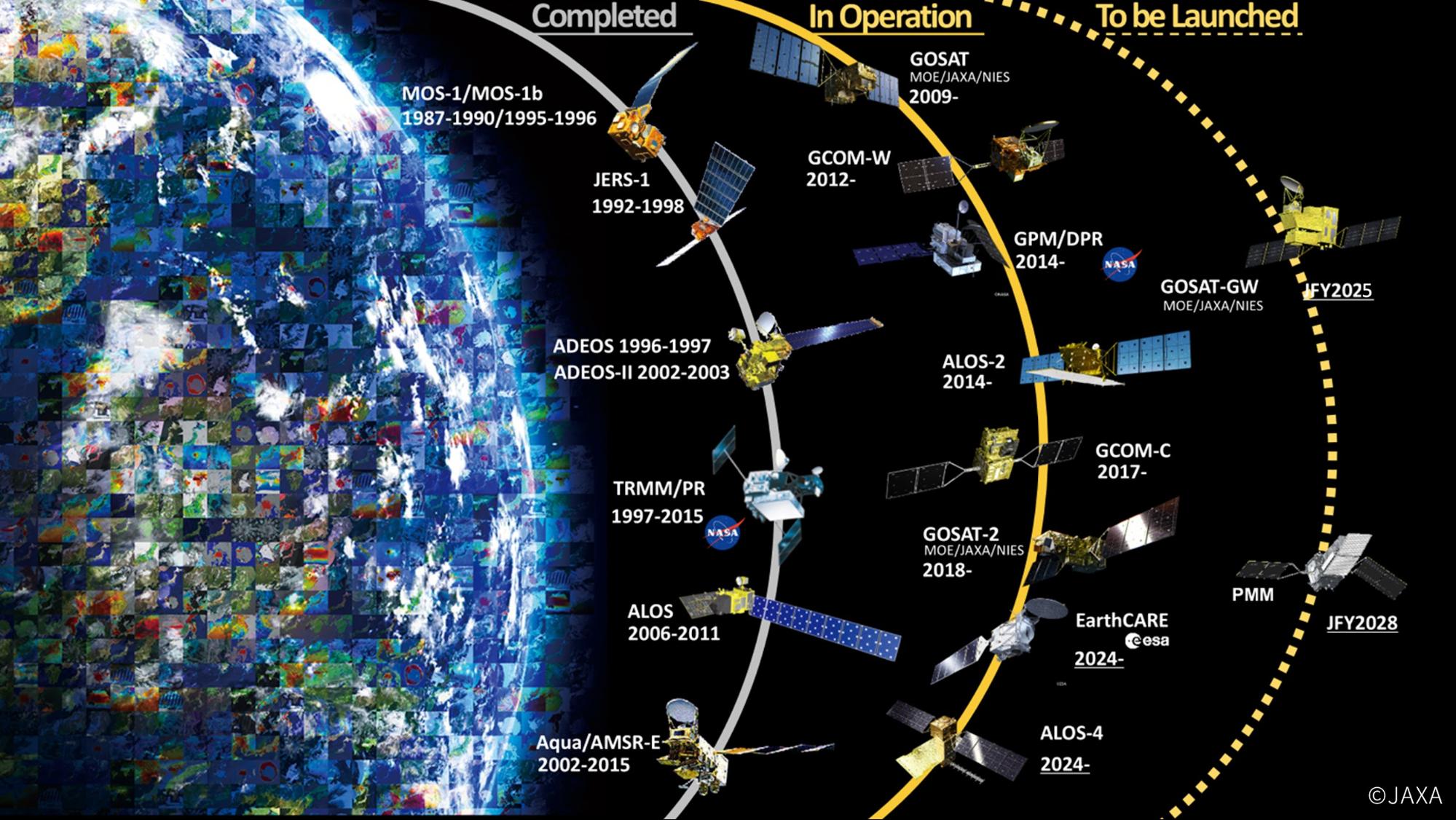Earth Observation Satellite
Earth Observation Satellite

Manager: Rigen Shimada(Japan Aerospace Exploration Agency)
Satellite Earth observation plays an important role in Arctic research, as it enables wide-area and continuous monitoring of the cold Arctic environment.
Research Infrastructure “Earth Observation Satellite” contributes to the enhancement of observation data related to oceans, land, ecosystems, and cryosphere. Earth Observation satellites such as the Global Change Observation Mission – Water “Shizuku” (GCOM-W), Advanced Land Observing Satellite 2 “Daichi-2” (ALOS-2), Advanced Land Observing Satellite 4 “Daichi-4” (ALOS-4), Global Change Observation Mission – Climate “Shikisai” (GCOM-C), Earth Clouds, Aerosols and Radiation Explorer “Hakuryu” (EarthCARE), and the Global Observing SATellite for Greenhouse gases and Water cycle “IBUKI GW” (GOSAT-GW) provide valuable data. These data, along with model products that integrate and utilize them (such as NEXRA and Today’s Earth), are prepared and provided in user-friendly formats for researchers. Additionally, data obtained from field observations conducted under various research themes are utilized to provide feedback for the development and improvement of products at JAXA. This aims to enhance the accuracy of satellite-derived physical quantities in the Arctic and to develop new products.
Furthermore, climate change information in the Arctic, extracted and analyzed from these satellite and model datasets, is provided to each research theme, thereby contributing to the achievement of key research goals and strategic objectives.

JAXAの地球観測衛星
Cooperative Institutions
National Aeronautics and Space Administration (NASA)/ European Space Agency (ESA)/ National Oceanic and Atmospheric Administration (NOAA)/ National Snow and Ice Data Center (NSIDC)
